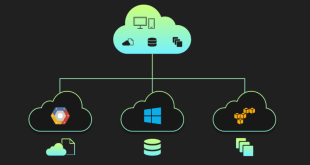In the rapidly evolving landscape of IT infrastructure, one technology has been gaining significant traction: Hyperconverged Infrastructure (HCI) for Private Cloud Solutions. This groundbreaking approach integrates compute, storage, and networking into a single, scalable platform, revolutionizing how organizations manage their data centers. In this blog, we delve into the concept of HCI for private cloud solutions, its benefits, real-world examples, and why it’s the future of IT infrastructure.
Understanding Hyperconverged Infrastructure (HCI)
Hyperconverged Infrastructure is a game-changing architecture that consolidates traditional hardware components into a unified software-defined platform. It eliminates silos, reduces complexity, and increases agility, making it a perfect fit for private cloud environments. With HCI, organizations can easily scale resources based on demand, optimizing their IT infrastructure in a cost-effective manner.
The Key Components of HCI
Virtualization: At the core of HCI is virtualization, which abstracts computing resources from the underlying hardware, allowing for better resource utilization and flexibility.
Software-Defined Storage (SDS): HCI leverages SDS to pool storage resources and enable efficient data management, ensuring high availability and data redundancy.
Software-Defined Networking (SDN): SDN in HCI enables seamless network management and improves network performance, ensuring smooth data flow between virtual machines.
Advantages of HCI for Private Cloud Solutions
Simplified Management: HCI’s centralized management interface streamlines IT operations, reducing the need for specialized skills and easing the burden on IT administrators.
Scalability: Organizations can easily scale their private cloud infrastructure by adding nodes to the HCI cluster, avoiding traditional hardware limitations.
Cost Efficiency: By converging hardware components and leveraging commodity hardware, HCI significantly lowers total cost of ownership compared to traditional data centers.
Improved Performance: The seamless integration of compute, storage, and networking in HCI leads to enhanced application performance and reduced latency.
Enhanced Data Protection: HCI’s built-in redundancy and data replication capabilities enhance data protection, ensuring business continuity in case of hardware failures.
Real-World Examples of HCI in Private Clouds
Company X: Company X, a leading financial institution, implemented HCI to transform its IT infrastructure. The organization experienced a 50% reduction in data center space, leading to considerable cost savings.
Organization Y: Organization Y, a healthcare provider, adopted HCI to enhance data accessibility and scalability. The ability to add resources on-the-fly allowed them to meet increased demand during peak periods.
Enterprise Z: Enterprise Z, a global technology company, embraced HCI to streamline their development and testing environments. The simplified management allowed their developers to focus on innovation, leading to faster time-to-market.
Challenges and Considerations
Resource Planning: Proper capacity planning is crucial when deploying HCI to ensure optimal performance and avoid resource shortages.
Network Infrastructure: Organizations must have a robust network infrastructure to support HCI deployments and ensure seamless data flow.
Training and Skill Set: Although HCI simplifies management, IT staff may require additional training to operate and maintain the new infrastructure effectively.
6. Frequently Asked Questions (FAQs)
Q1: Is HCI suitable for all types of workloads?
Yes, HCI is highly versatile and can accommodate various workloads, from virtual desktops to mission-critical applications.
Q2: Can HCI be integrated with existing infrastructure?
Absolutely! HCI solutions are designed to seamlessly integrate with existing infrastructure, allowing organizations to adopt it incrementally.
Q3: How does HCI ensure data protection?
HCI utilizes software-defined storage and data replication techniques to ensure data is protected and readily available in case of hardware failures.
Q4: What are the long-term cost benefits of HCI for private cloud solutions?
HCI’s scalability and cost-effective use of commodity hardware lead to long-term cost savings, making it an attractive option for private cloud deployments.
Q5: Does HCI support multi-cloud environments?
Yes, many HCI solutions offer seamless integration with public cloud providers, enabling organizations to adopt a hybrid cloud approach.
Final Words
Hyperconverged Infrastructure for private cloud solutions is an undeniable game-changer in the world of IT infrastructure. By consolidating components, simplifying management, and enhancing scalability, HCI allows organizations to unlock unprecedented efficiency and cost savings. Embrace the future today by considering HCI as the cornerstone of your private cloud journey.
 webfily
webfily



